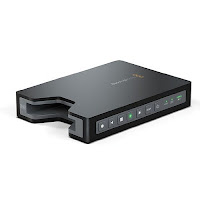When the Canon 5D MKIII was launched in March 2012 after years of anticipation the reaction of the market was one of slight disappointment or even indignation. The long delay of the launch (caused in part by the tsunami in Japan) had left everybody expecting a camera that would turn the video shooting world on its head and it seemed that this was just an improvement of the MKII.
Or so it seemed.
I used to work for Bernie Ecclestone on Formula One and I had all these ideas for on-screen information we could provide the viewer and asked why we didn’t do them for the new season. Mr E’s right hand man Eddie Baker replied “Don’t add too many new elements in one go, if you do some of the best stuff will go unnoticed.” Gradually in the seasons that followed the on-screen graphics were added to, much to the joy of F1 fans.
In a way the Canon 5D MKIII is the same and has lots of features hidden away that are now being revealed both by Canon and others and I see the camera now has three levels of operation.
Level 1. This is the camera as it comes out of the box (with original firmware). Shooting to the internal cards using H.264 with All-I compression at 90 MB/s or IPB at 31 MB/s the quality was a distinct improvement on the MKII (especially with the improved low light performance). It is used as a B-roll camera in the main and CF cards don’t have to be massive or ridiculously fast. It was a camera used to supplement other cameras.
Level 2. Other cameras such as the Panasonic GH3 started to have the ability to output the video signal through the HDMI monitoring port directly to an external recorder like the Atmos Ninja or the Blackmagic Design Hyperdeck Shuttle.
 |
| Atmos Ninja 2 |
 |
| Blackmagic Design Hyperdeck Shuttle |
This could also be done with the MKIII but it was not possible to get a clean output – no information over the pictures including the red recording dot. In October 2012 the Magic Lantern team released Alpha 2 which allowed clean out pictures on the HDMI among a host of other improvements. Six months later Canon released a firmware update that allowed the camera to do the same thing – officially. This gave the MKIII the ability to record in 4:2:2 colour space which I won’t explain here but gives more flexibility for colour correction. It also meant it is possible to record in less compressed formats such as ProRes 422. With a proper external sound recorder this brought the MKIII up to A-camera status and it became a more practical unit to use for interviews and documentaries.
Level 3. This was the Level people had dreamed of and hoped for when the MKIII was launched. Because the camera is a DSLR is can shoot still pictures in RAW format which gives simply the best recording format available and the dream was to capture this stream of still images and combine them to a video clip in the way that time lapsers have done for years. But it seemed a pipe-dream until Magic Lantern discovered a way of making the camera do it, and do it to internal recording media. They have just announced the possibility to record 14-bit which gives even more colour information to play with. This level goes beyond that of an A-roll camera and becomes a film camera and the results are quite stunning as James Miller’s Genesis film displays.
Level 4 would turn it into a EOS 1DX C+ and record 4K RAW to an external record device. This is my dream and a month ago I wouldn’t even have mentioned it in public, but now I don’t think it is all that fantastical, I’m sure Magic Lantern think the same. Canon have probably got their fingers crossed that no-one ever achieves it.
So the Canon 5D MKIII really is the most flexible camera around and can be used for everything with the possible exceptions of sports and car chases and the analogy with the Swiss Army knife would be complete if there was a flip out bottle opener in the card bay – Canon please work on that. Design supplied.

